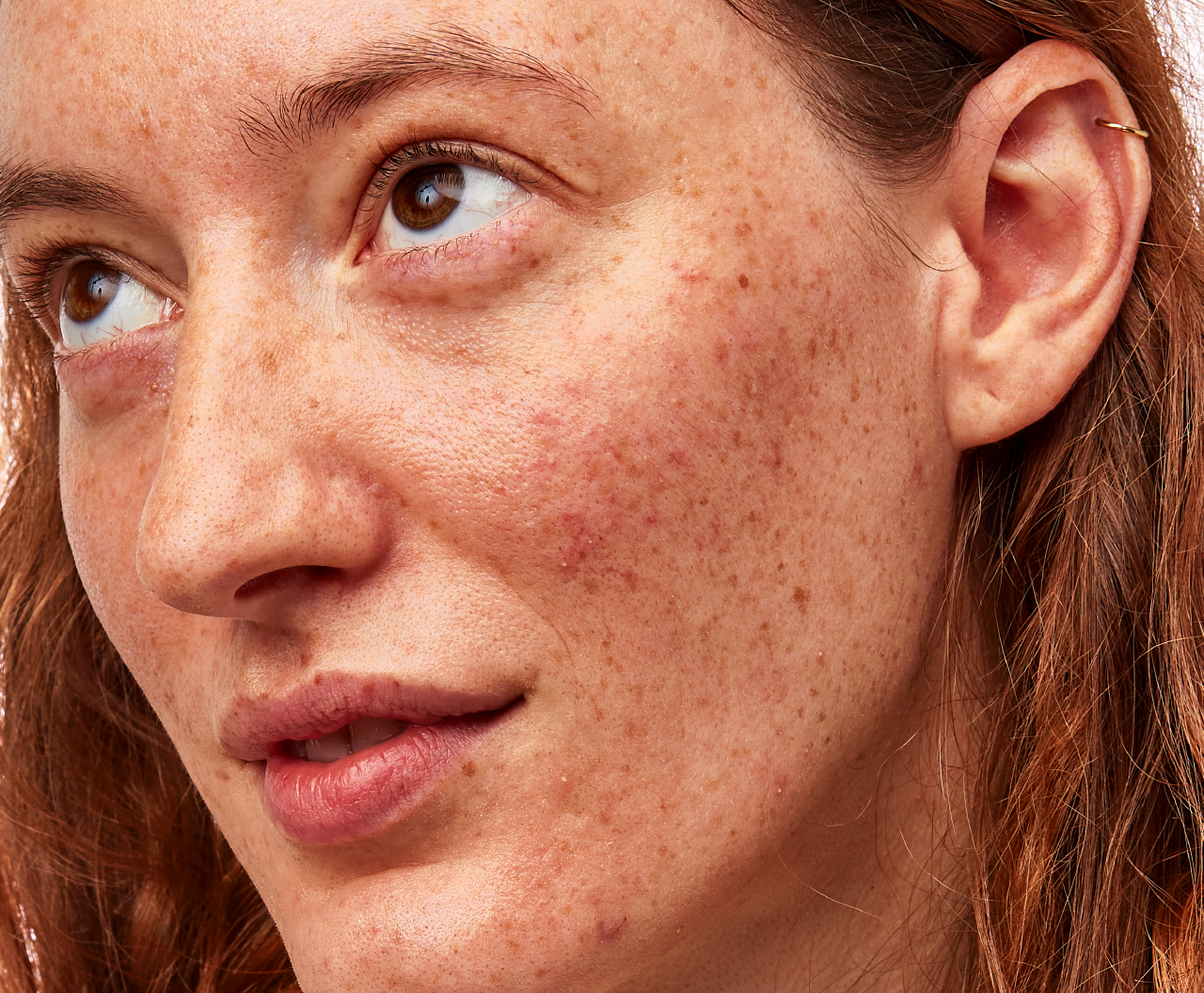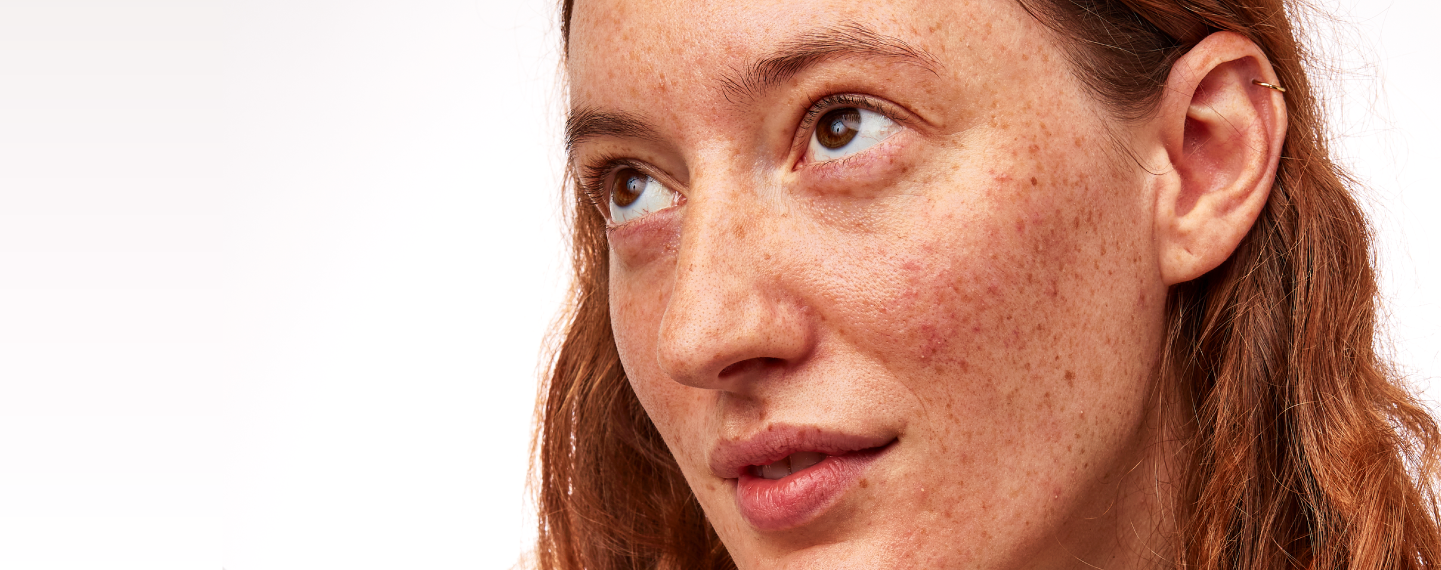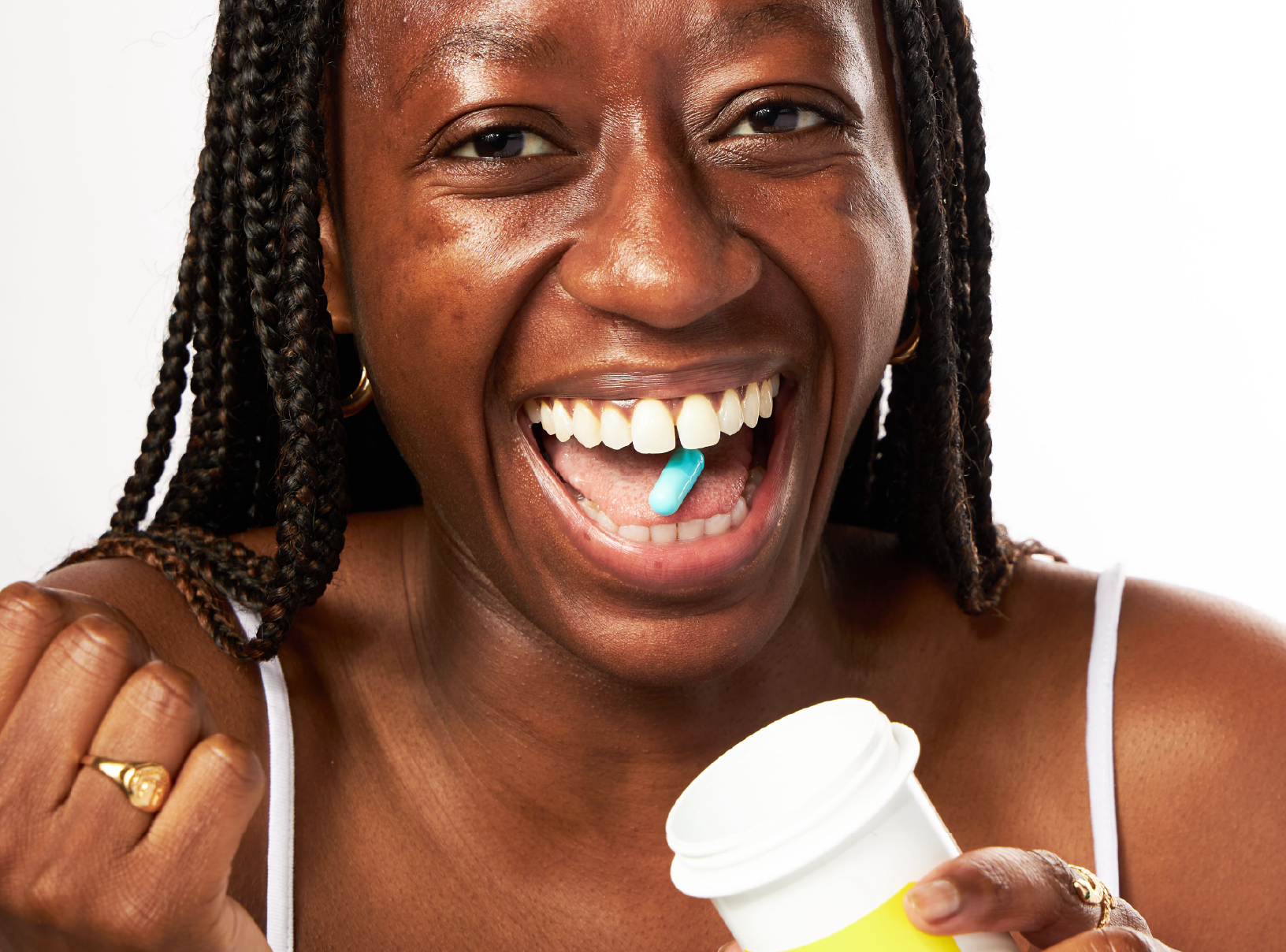Education
Nose acne: Getting rid of pimples on and around your nose


SHARE
Education
Nose acne: Getting rid of pimples on and around your nose
Medically reviewed by Kristin Hall, FNP
Written by Apostrophe Team
Last updated 11/3/2024
Nothing says, “Hello, nice to meet you!” like a giant pimple on your nose, or even a small cluster of them.
Your nose leads the way, in front of your smile and with the rest of your body trailing just slightly behind. So, struggling with acne in one of the most prominent places on your face can be especially challenging.
Acne in general is not a walk-in-the-park skin condition. Not only are breakouts unsightly, but they can be painful — both physically and emotionally.
Fortunately, whether you have acne on your nose or your rear end, there are numerous acne treatments on the market, and likely one that will be effective for you.
But before we get to “fixing” your zits, let’s talk about what’s causing them.
What Is Acne, Exactly?
We all know what acne is, but do you really know what’s happening under the surface?
Your skin produces a natural moisturizer called sebum. This oil is good — in moderation. It exits your skin through your pores.
But when its route is blocked by dead skin cells, it festers. This pool of trapped oil will ultimately create a pimple, the size and severity of which may vary.
If the bacteria known as propionibacterium acne (or P. acnes, and now known as C. acnes) is present, it’ll likely become inflamed and bigger than you’d like.
It could also be painful and leave a scar. But even if it ends up being a small white head (technically referred to as a comedone), it can be distracting.
We commonly think of acne as a teenage problem, but that isn’t always the case. Adult female acne is relatively common. It can be brought on or worsened by hormonal fluctuations during the menstrual cycle, smoking, stress, medications, and endocrine disorders like polycystic ovary syndrome (PCOS).
Nose Acne
Nose acne develops in the same manner as acne anywhere else on your body — the oil is trapped beneath the surface of your skin, resulting in a pimple.
Generally, your risk of developing nose acne is similar to other acne.
Are your hormones in flux? Are you under considerable stress? Did you start a new medication? But there are some factors that may specifically impact the skin on or around your nose.
Sports equipment or other items pressed against your face for an extended period can push dirt and bacteria into your pores.
For example, goggles, helmets, masks, and face guards rub against your skin and could create acne mechanica, or small bumps that can turn into more traditional acne.
Another way to get dirt and bacteria into your nose is simply by touching it with your hands or other objects harboring those.
Think about what’s touching your nose throughout the day and if anything changed before your breakout occurred — that could point to the culprit.
Getting Rid of Acne Oon or Around Your Nose
If you know a piece of sporting equipment or face mask is contributing to your acne, keeping those materials clean can go a long way.
But barring an obvious culprit in your nose acne, you’re left with traditional acne treatments, many of which are highly effective.
Topical treatments
If your acne is mild to moderate, your healthcare provider may recommend a topical skin care treatment such as benzoyl peroxide, a topical antibiotic, or a topical retinoid.
These are applied directly to the face, where they fight the bacteria that cause acne and combat excess oil.
Oral or systemic treatments
If your acne is more severe, your healthcare provider might suggest an oral antibiotic to get it under control.
Or if it’s believed your skin problems are largely due to hormonal fluctuations, hormonal contraceptives may be recommended.
The Bottom Line
Nose acne is a drag. There’s no doubt about it. Like acne elsewhere on our bodies, it can be caused by everything from face masks and sports equipment to hormone fluctuations, stress, or even new medications.
But there are treatments available.
Finding the right treatment for your acne, no matter where it is, could be a matter of trial and error.
Doctors of dermatology understand how your skin type and type of acne can determine the right treatment.
Talking with a dermatology provider will get you on the right track sooner, so you can put your best face forward.
References
https://www.hopkinsmedicine.org/health/conditions-and-diseases/acne
https://www.aad.org/public/diseases/acne/causes/sports-equipment
Like what you just read? Sign up for our email list to get the scoop on skincare science delivered straight to your inbox.

Deep Dives
A dermatologist shares his thoughts on the recent studies about benzoyl peroxide and benzene.
Read More
Education
What is milia?
What is milia? Today, we’re jumping into one type of bump that you may have heard about most commonly in infants — milia.
Read More
Education
Best moisturizer for acne-prone skin
If you have combination acne-prone skin, figuring out which moisturizer is best for your skin might be tough. In this guide, we break down the best moisturizer for combination, acne-prone skin.
Read More
